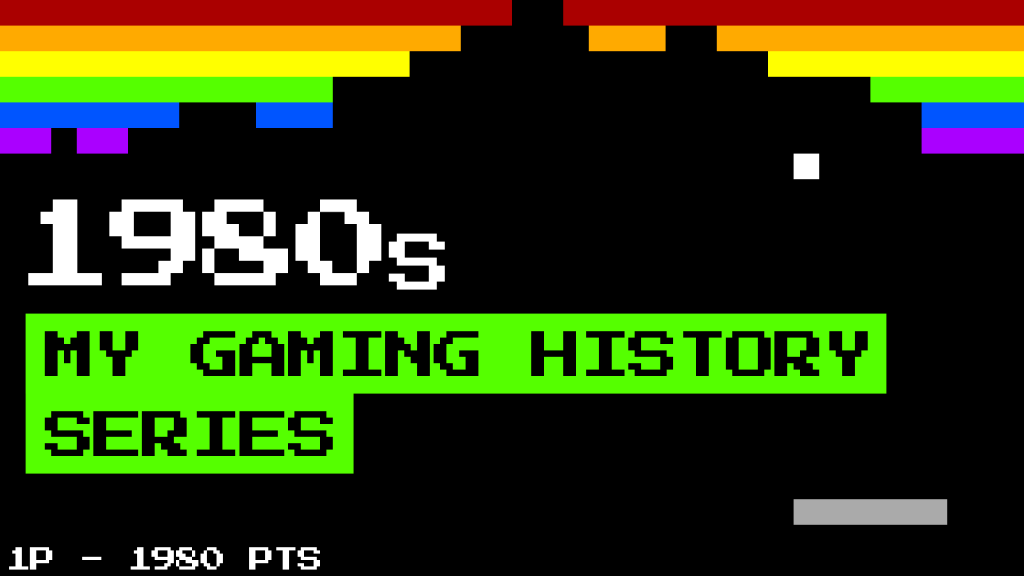- My gaming history – The 80’s
I asked the obvious question – did he have any games on the computer? Bear in mind I hadn’t even seen DOS before, and my dad reached over and typed on the keyboard:
FP.EXE
and up came “Fighter Pilot“. I put it in quotes because the game was actually called Sopwith, something I only discovered in researching digging up screenshots for this series. But I’m going to call it Fighter Pilot, so let me describe the action.
The objective of the game was to score points by shooting and bombing air targets (other biplanes) and ground targets (tanks, factories and so on) without dying or crashing. The controls were simply:
, – Go up a bit
. – Invert
/ – Go down a bit
space – Shoot
b – Bomb
I don’t think I was very good, but I was pretty young.
IBM PC XT
But I was even luckier that my dad brought home a PC from work which he used for work… when I let him. Basically when I wasn’t playing games.
Marvel at its specs:
- IBM PC XT
- EGA graphics (16 colours)
- 640 KB RAM
- Something like a 5 MB hard drive
- 5.25″ floppy disk drive
And there were basic button smashing games like Microsoft Decathlon (yes – MICROSOFT!) where you’d basically smash [ and ] alternately as quickly as possible, to run for instance. Check that out and behold the exquisite sound:
IBM PS/2
In about 1988 I think my dad decided to spend money on our own computer, and by 1988 standards I think this thing was pretty well specced.
But they’re not floppy
We got a brand new IBM PS/2 with a 286 processor, but for me the biggest differences were the new 3.5″ floppy drive (but they’re not floppy and I couldn’t understand it at the time), the 256 colour VGA graphics (count them) …and the mouse!
- IBM PS/2 model 50Z
- VGA graphics (256 colours)
- 1 MB RAM
- 60 MB hard drive
- 3.5″ floppy disk drive
- Mouse
Anyway, I got to play games like:
Access to other games
Looking back I guess I was really lucky. In addition to having a computer at home, we also had computers at school and I had friends and neighbours who had some early games consoles.
At school
At we had a couple of computers, although I didn’t get to use them very often because they were shared with everybody.
We had a BBC Micro which was supposed to be for doing educational things, but there was only one of them. So while some people were using the computer, others would control the Big Trak “educational toy”.
But we just wanted to get on the BBC and play Chuckie Egg.
Then we got an Acorn Archimedes, and people always knew which disk had “Lander” on it, which was a demo for a game called Zarch. The Acorn was pretty amazing, as the first computer I’d seen with a GUI, icons and where the mouse did something. Lander was also 3D which I don’t think I appreciated at the time, but check it out below.
Kids in the playground had a range of those aforementioned crappy handheld LCD games. If you were lucky, it was Donkey Kong, but a range of simple games from Systema popular.
I was quite lucky to get the Tomytronic 3D game Sky Attack for one birthday. That was a simple binocular-like device, but quite amazing at the time for young me.
Click to enlarge images and watch the videos…
Other people
I mentioned the other neighbourhood children with parents in IT above. But there were plenty without a connection to IT who had plenty to play.
The neighbour opposite had a Sinclair ZX Spectrum which I remember for its rainbow on the corner and the rubber keys. The only game I remember on that was Arkanoid, where you bounce a ball off a paddle to destroy blocks at the top of the screen.
The kids up the road had a Nintendo Entertainment System, which was incredible! I remember playing the first Super Mario Bros and Duck Hunt with the light gun – that was so cool. Then they got Super Mario Bros 2 in 1988 which had neater graphics and let you play as different characters; Mario, Luigi, Toad or Peach. And you could scroll left. It blew my mind.
I also had some friends who had Commodore 64 computers, with the tape drive. Tapes! I don’t remember many of the games, but I definitely remember Lode Runner. You can play this for yourself in this online browser-based port. What I did find cool about the C64 was its joystick. So revolutionary.
Finally, when my mum would take me with her to her friends’ house, I got to play on his Amstrad CPC while the adults all ate, drank and talked. Harrier Attack was my game of choice every time on that.
Coming in the 90s
By this point, games have already begun to evolve quite a bit, even with the still relatively simple technology available. That IBM PS/2 would take me well into the 90s.
But they were about to really accelerate as we move into a decade of standards, customisation and 3D graphics. A lot is going to change in the coming ten years, and I’ll explore that busy period of change in the next post.
